The Nova Scotia Archives is pleased to share photos showcasing the changing faces of urban centers in Nova Scotia. You can learn more about the archives and explore thousands of photos, textual records, maps, art, and more on their website.
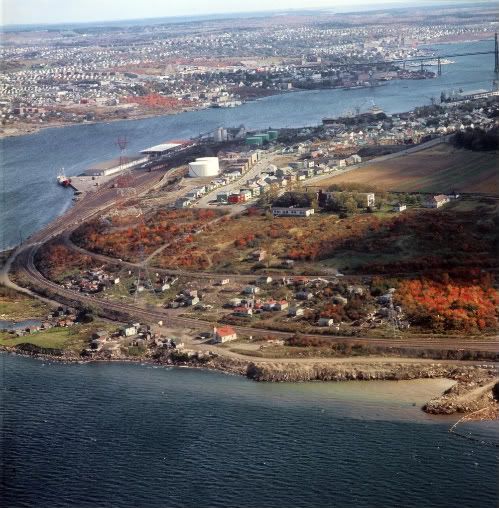
Bird’s eye view of Africville, showing its location on Bedford Basin, with north end Halifax and the Narrows in the background.
Selections from Bob Brooks’ Photographic Portrait of Africville in the 1960s.
Bob Brooks created his photographic record of Africville, mostly in black and white, between about 1962 and 1965. His work appeared in Time Life, The Star Weekly, Sports Illustrated, Newsweek, McCall’s, Harper’s, Maclean’s, Chatelaine, The London Times, Paris Match and National Geographic.

Woman, hands on hips, watching a group of children climbing a path, Africville.
Africville was settled in about the 1840s by people from Hammonds Plains and Preston. William Brown Sr and William Arnold purchased the land in 1848; the first church congregation (later Seaview African United Baptist) was established in 1849; and an elementary school was opened in 1883. Although geographically a part of the City of Halifax, Africville was always a separate community, with a largely African-Nova Scotian population.
Africville houses on either side of a hillside lane, seen from the opposite side of the railroad tracks.
Africville struggled for survival throughout its 125-year history. It was divided by railway tracks and encroached upon by factories, sewage disposal pits, slaughter houses, and other non-residential development. The elementary school was closed in 1953 and the children were relocated to racially-integrated schools elsewhere in Halifax. In the mid-1950s, Halifax moved its large open civic dump to within one-half mile of Africville. The City considered Africville to be a suitable site for eventual industrial development, and did not extend water, sewer, police, and other municipal services to the community.
Rear view of Seaview African United Baptist Church, with Africville houses and laundry flapping in the breeze in the foreground.
In October 1962, the City decided to eliminate Africville and relocate its residents elsewhere in Halifax. The relocation was part of a broader program of “urban renewal” in Halifax, as in other North American cities, in the 1960s. The process of relocating Africville residents began in 1964; the demolition of the community was largely completed by the end of 1967. In early January 1970 the City bulldozed the building of the last Africville resident, who reluctantly agreed to sell his property to avoid expropriation.
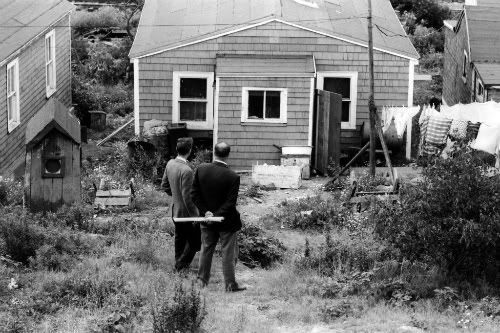
Two Halifax city officials, one holding a rolled plan of Africville, outside an Africville house, prior to demolition of the community.
The land on which Africville stood is now part of Seaview Memorial Park, named in memory of Seaview African United Baptist Church. Africville was designated a national historic site in 1996 and a plaque was placed at the site in 2002.
Two Africville children, with Seaview African United Baptist Church and houses behind it in the distance.

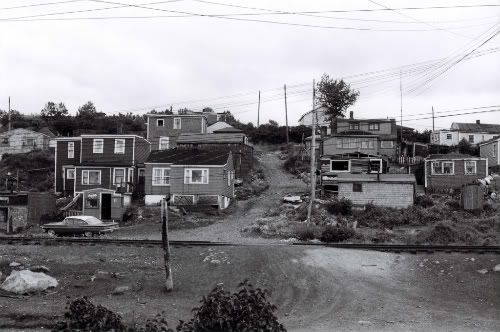
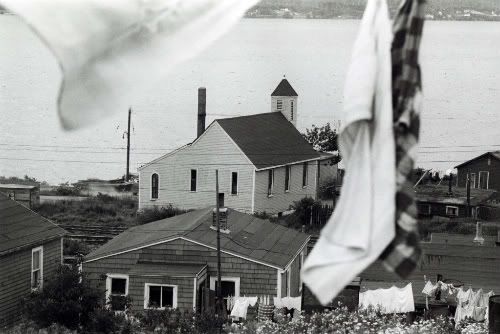
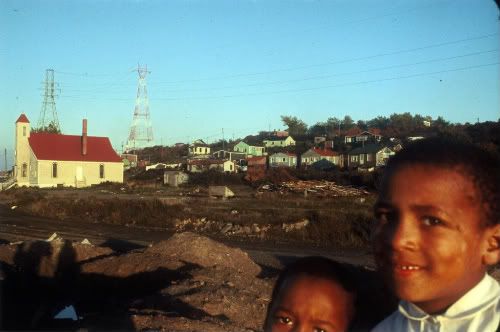
2 comments
Amazing pictures. The city and its citizens should do more to appreciate their neighbours. Recent crimes are disgusting. All Haligonians should have a right to peace and a home for their memories. Resilience smiles!
There is ONE who knows the whole story, there will be a day of reckoning.